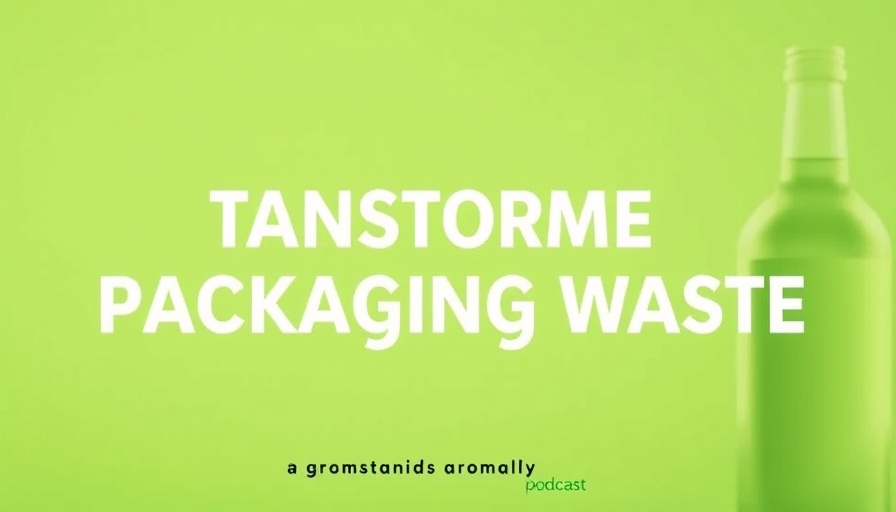
The Beauty Industry's Hidden Waste Crisis
Have you ever tossed out a beauty product and wondered where it ends up? For many parents, the beauty industry's waste crisis can seem like a distant issue, but it's one that impacts our planet considerably. With millions of beauty products ending up in landfills each year, the quest for sustainability in this sector has never been more pressing. Understanding this crisis is crucial not just for the environment but for how we educate our children about consumption and waste.
Introducing Pact Collective
In response to the overwhelming problem of packaging waste, Pact Collective was born out of a collaboration between Credo Beauty and MOB Beauty. This nonprofit aims to unite the beauty industry to enact real change through reducing packaging waste and embracing circular solutions. Carly Snider, the Executive Director of Pact Collective, emphasizes the importance of collective action, stating, "No single beauty brand can fix the packaging crisis alone." This points to a significant trend: collaboration is essential in addressing large-scale problems.
Understanding the Packaging Problem
One of the core challenges of beauty packaging is its complexity. Most products have tiny formats, mixed materials, and flexible tubes, which traditional recycling systems struggle to process. For concerned parents, this means that the innocent-looking lotion or shampoo bottle may not be easily recyclable. Instead, they often fall through recycling equipment or become lost in the sorting process. Knowing this can empower you to make smarter choices as a consumer.
A Closer Look at Pact's Mission
Pact Collective is taking significant steps towards creating a more sustainable beauty industry. With over 3,000 collection bins across North America, they offer a practical solution for consumers looking to properly dispose of their beauty product empties. This initiative not only encourages responsible recycling but also educates consumers about the impact of their choices. Interactive guides and QR codes provided by Pact help parents and their children navigate recycling more effectively, fostering a sense of environmental stewardship in the next generation.
Education and Consumer Power
Delving deeper into their mission, Pact recognizes that consumer education is a crucial part of enacting change. They aim to inform both brands and consumers about proper recycling practices. By choosing brands that prioritize sustainable packaging and understanding the processes behind recycling, we as parents can guide our children towards making environmentally-friendly choices.
Looking to the Future: Refill and Reuse
As the beauty industry evolves, the emphasis is not simply on recycling but on finding ways to refill and reuse products. Knowing that recycling should be the last resort is liberating. The future of beauty packaging lies in innovative designs that focus on sustainability from the ground up. Instead of disposing of empties, we can encourage a sustainable lifestyle by exploring refillable options, thus tackling the waste problem at its source.
Why This Movement Matters to Families
For families and especially parents, the beauty industry's environmental impacts can resonate on a personal level. By dealing with these issues directly, you’re not just protecting the planet; you’re also teaching your children invaluable lessons about responsibility and sustainability. Engaging with initiatives like Pact Collective offers practical solutions that enable families to make a more significant impact.
Take Action: Choose Wisely
As consumers, we have the power to influence the beauty industry by choosing brands that prioritize sustainability. For families, this means being discerning about which products we buy and sharing that knowledge with our children. By collaborating with organizations like Pact Collective, we can contribute positively to the environment while setting an example for the next generations.
Explore what Pact Collective has to offer and see how you can participate in reducing beauty packaging waste. Together, we can accelerate the impact towards a more sustainable future.
 Add Row
Add Row  Add
Add 




Write A Comment